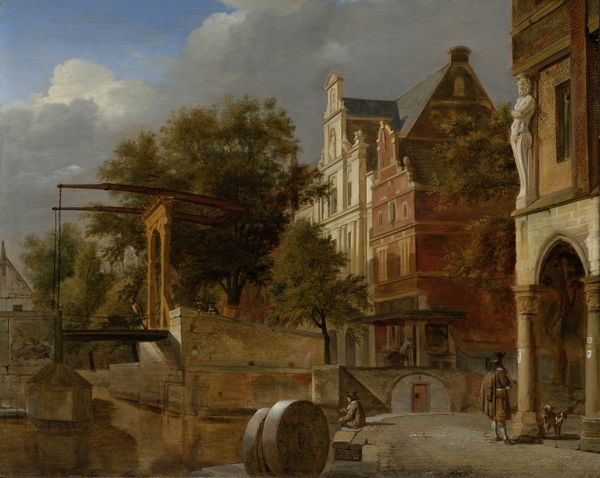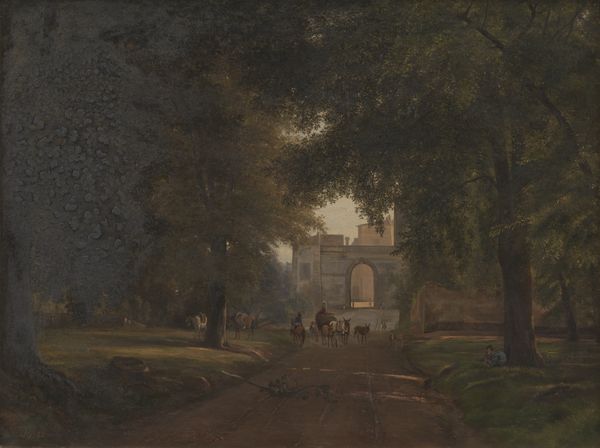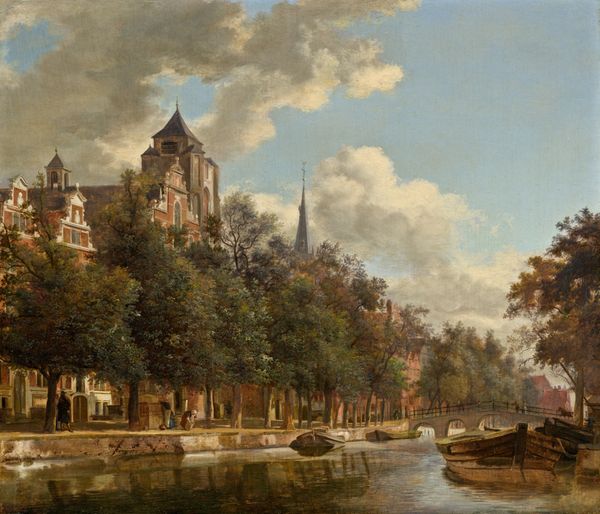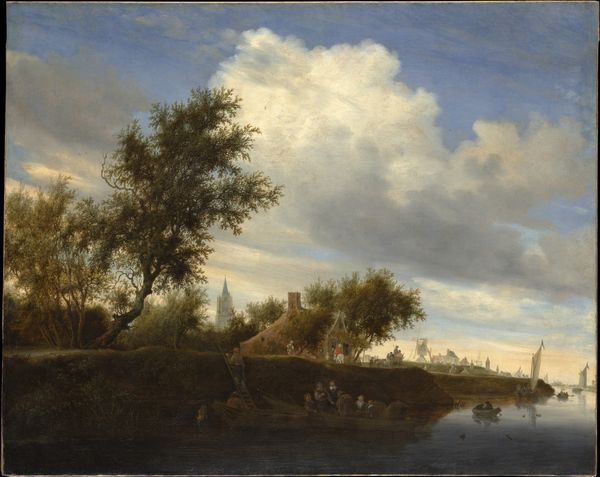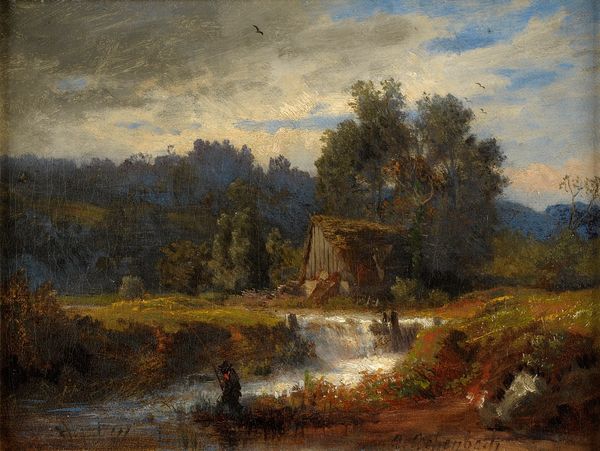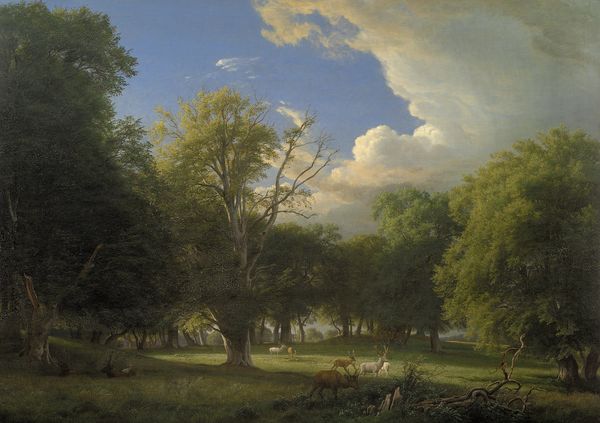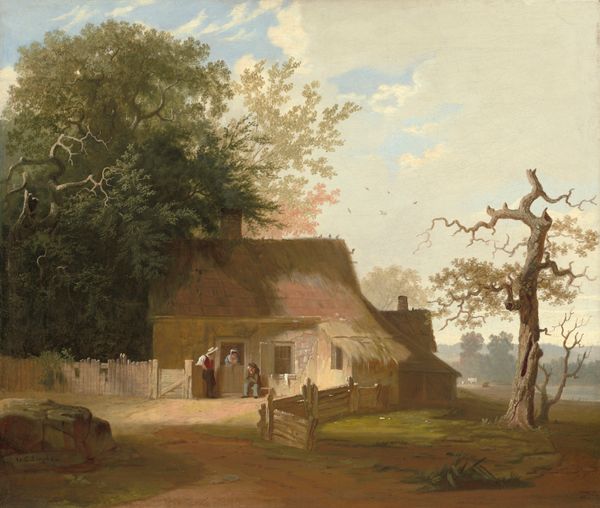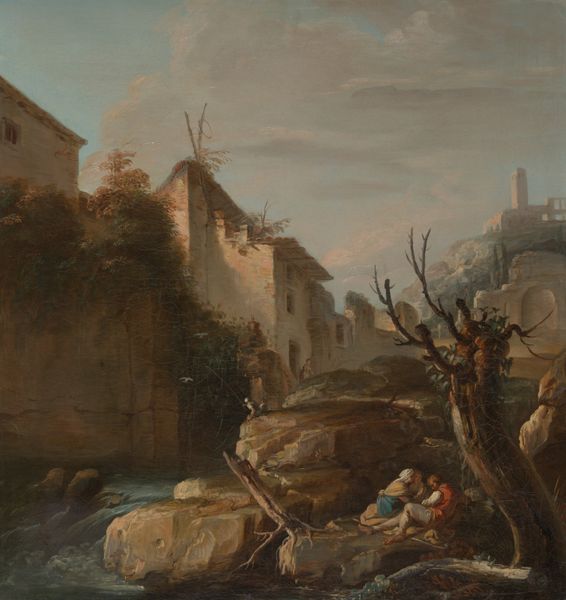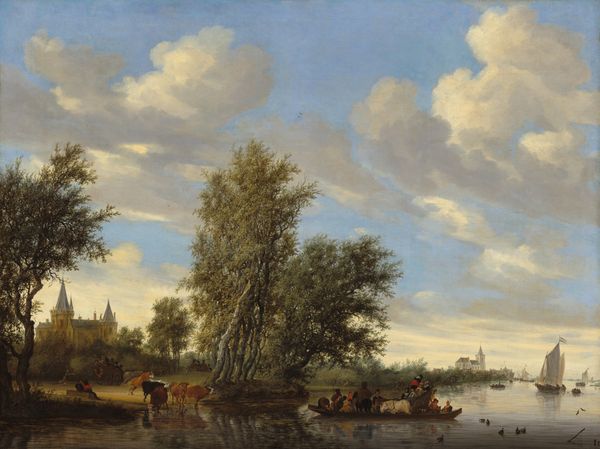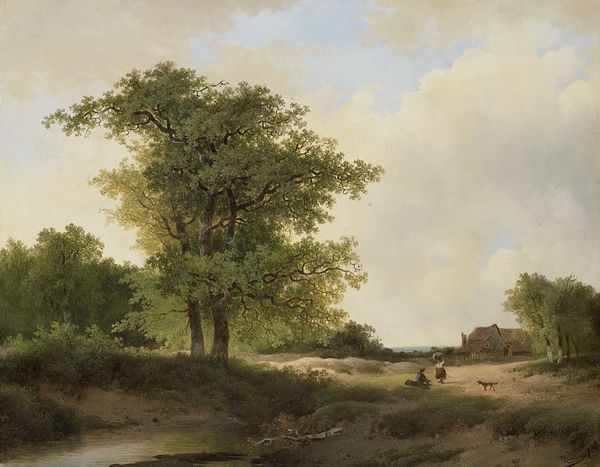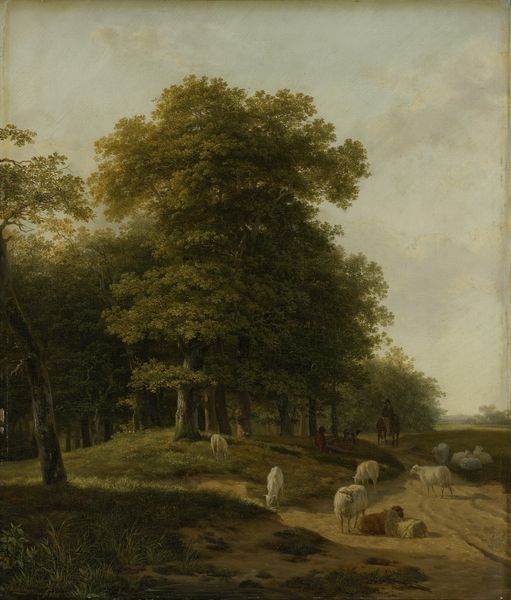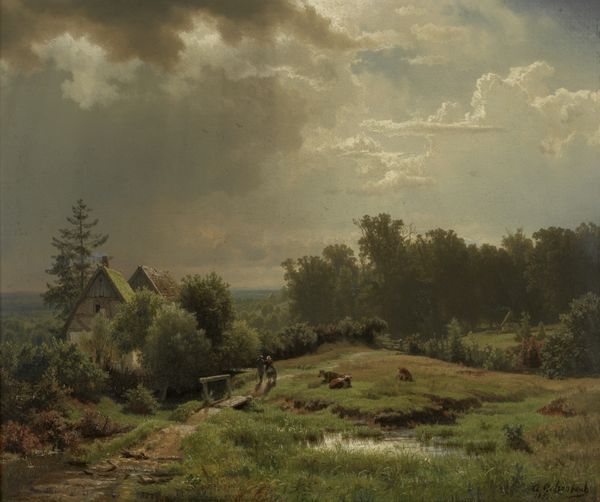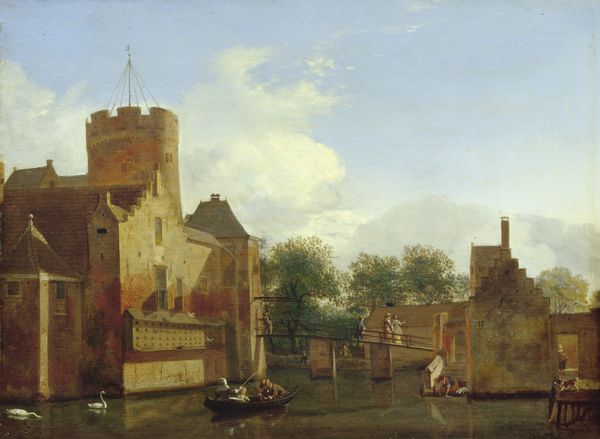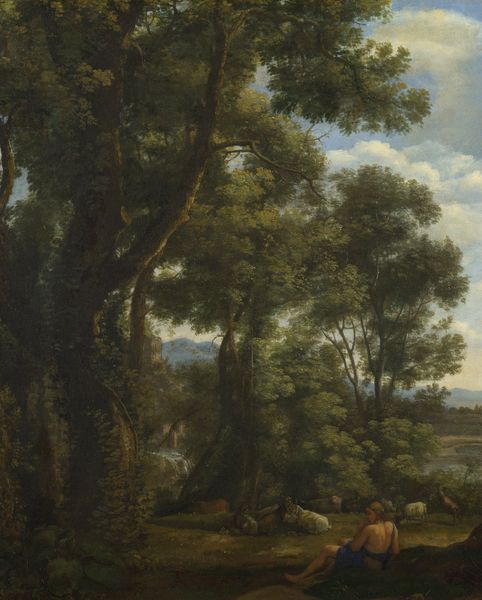
painting, oil-paint
#
baroque
#
dutch-golden-age
#
painting
#
oil-paint
#
landscape
#
cityscape
#
genre-painting
#
realism
Dimensions: height 37 cm, width 44.5 cm
Copyright: Rijks Museum: Open Domain
Editor: Here we have Jan van der Heyden’s "The Stone Bridge," dating from about 1660 to 1672. It's oil on canvas, and something about it feels both incredibly serene and a little melancholy, maybe it’s the light. What captures your eye when you look at it? Curator: You know, melancholy is a perfect starting point. I often find myself wandering into this painting, imagining the cool air coming off the water. Van der Heyden really knew how to capture a sense of place. For me, it's all about the textures - the rough stone of the bridge contrasted with the almost velvety foliage. Editor: The details are incredible, especially on the buildings. Curator: Exactly! It's that hyper-realism blended with the softer, almost romantic rendering of the trees and sky that makes it sing. You see how the light kind of… caresses everything? Almost like a memory being recalled. He’s showing us the particularities of the urban experience. Makes me wonder what daily life looked like then. Editor: It's almost photographic in its detail. It seems like an early version of a postcard or something! Curator: Postcards, yes! Souvenirs. Proof of life, proof of place. Before photography, painting did that. Jan Van der Heyden painted those details that made it home, using the brush like a lens. It’s wild to think people probably walked across a bridge exactly like this, right? What does that tell you about Dutch Golden Age art? Editor: Maybe it was an exercise of national pride? Of depicting their surroundings as worthy of the art historical canon. It is amazing how a little street scene can carry so much weight, and I now see beyond the mere calm surface! Curator: Precisely! And you start to wonder about the people within it too, don't you? Every street has a story. Every brick, a whisper of the past.
Comments
rijksmuseum about 2 years ago
⋮
This work depicts an imaginary canal. While it is clearly inspired by Amsterdam models, Jan van der Heyden gave it his own twist. A striking aspect is the way he rendered the canal, which runs from the foreground to the centre of the composition. Adriaen van der Velde painted the figures, which he was regularly asked to do by other artists as well.
Join the conversation
Join millions of artists and users on Artera today and experience the ultimate creative platform.
